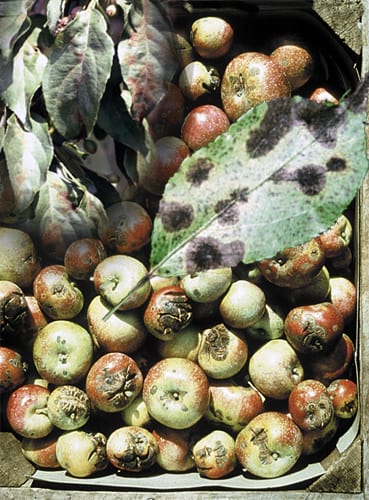Venturia inequalis, V. asperata (fungus)
Plants affected are Apple, crabapple, pear, firethorn and many other species of Malus throughout North America and Europe.
Cool, wet weather favors heavy leaf infection.
Symptoms first appear in the spring as spots (lesions) on the lower leaf surface, which is the side first exposed to fungal spores as buds open. At first, the lesions are usually small, velvety, olive green in color, and have unclear margins. On some crabapples, infections may be reddish in color. As they age, the infections become darker and more distinct in outline. Lesions may appear more numerous closer to the mid-vein of the leaf. If heavily infected, the leaf becomes distorted and drops early in the summer. Trees of highly susceptible varieties may be severely defoliated by mid-to-late summer.
The fungus, V. inequalis, survives the winter in the previous year’s fallen diseased leaves. In the spring, the fungus in the previous year’s leaves produces millions of airborne spores during rain periods in April, May and June. These are carried by the wind to young leaves, flower parts and fruits. Spores germinate in a film of water, the fungus penetrates into the plant and depending upon weather conditions, symptoms (lesions) will show up in 9 to 17 days. The fungus also produces a different kind of spore in these newly developed lesions. These spores are carried and spread by splashing rain to other leaves and fruits, where new infections occur. The disease may continue to develop and spread throughout the summer.


